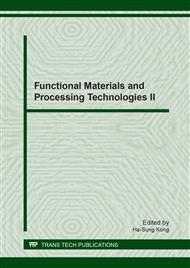[1]
E.S. Baglasova, B.A. Rusanov, Fundamental research as a way of development of engineering thinking of students, in T.N. Shamalo (Ed.), Formation of Engineering Thinking in the Process of Training, Ural State Pedagogical University, Ekaterinburg, 2015, pp.20-22.
Google Scholar
[2]
P.I. Gnilomedov, Problems of formation of engineering thinking in school education process, in T.N. Shamalo (Ed.), Formation of Engineering Thinking in the Process of Training, Ural State Pedagogical University, Ekaterinburg, 2015, pp.50-54.
Google Scholar
[3]
Z.S. Sazonova, N.V. Chechetkina, The Development of Engineering Thinking – The Basis of Improving the Quality of Education, MADI (GTU), Moscow, (2007).
Google Scholar
[4]
O.V. Zakharova, Theoretical Bases and Technique of Training of Designers in Conditions of Humanization of the Subject-Spatial Environment, PhD Thesis, Novosibirsk State Academy of Architecture and Arts, Novosibirsk, (2005).
Google Scholar
[5]
Decree of the Government of Moscow of August 25, 1998 N 647, On the statement of Rules of carrying out architectural and urban planning competitions in Moscow, 1998, available at: https://www.mos.ru/authority/documents/doc/27196220/ (accessed November 13, 2017).
Google Scholar
[6]
S.A. Dekterev, The competitive system is the basis of architectural creativity, Architekton, 1(6) (2004).
Google Scholar
[7]
M.V. Perkova, O.V. Kovrizhkina, Architectural Competition Design in the Educational Process, Publishing house BSTU, Belgorod, (2013).
Google Scholar
[8]
Y.M. Kalinin, M.V. Perkova, Architectural Modeling, Publishing house BSTU, Belgorod, (2009).
Google Scholar
[9]
D.A. Lonshakov, M.V. Perkova, A.G. Bolshakov, K.M. Tribuntseva, Creating conception of recreational areas development on the example of small urban settlements, Research Journal of Applied Sciencens, 9(11) (2014) 887-892.
Google Scholar
[10]
A. Panfilov, V. Panfilov, Principles of formation of mobile dwelling of cluster type with application of additive technologies, MATEC Web of Conferences, 117 (2017). doi.org/10.1051/matecconf/201711700133.
DOI: 10.1051/matecconf/201711700133
Google Scholar


